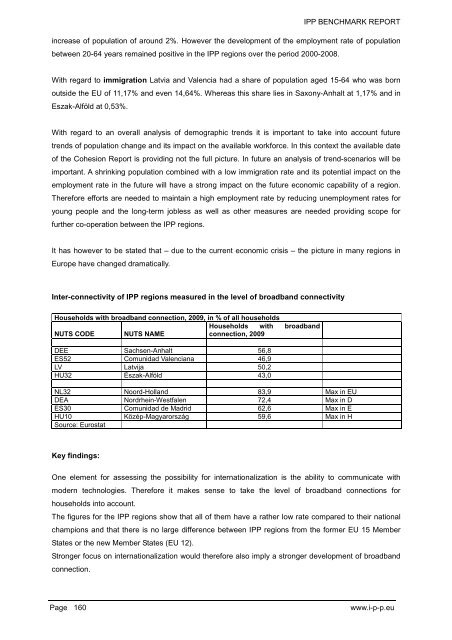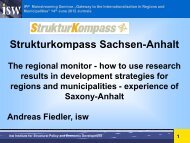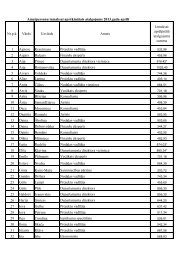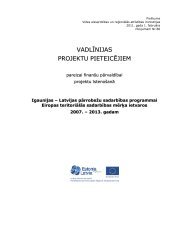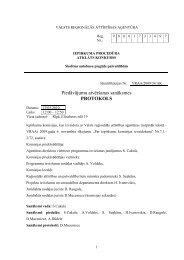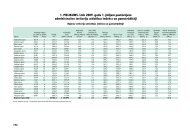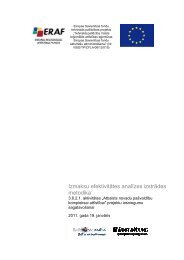Benchmark Study 1
Benchmark Study 1
Benchmark Study 1
Create successful ePaper yourself
Turn your PDF publications into a flip-book with our unique Google optimized e-Paper software.
IPP BENCHMARK REPORT<br />
increase of population of around 2%. However the development of the employment rate of population<br />
between 20-64 years remained positive in the IPP regions over the period 2000-2008.<br />
With regard to immigration Latvia and Valencia had a share of population aged 15-64 who was born<br />
outside the EU of 11,17% and even 14,64%. Whereas this share lies in Saxony-Anhalt at 1,17% and in<br />
Eszak-Alföld at 0,53%.<br />
With regard to an overall analysis of demographic trends it is important to take into account future<br />
trends of population change and its impact on the available workforce. In this context the available date<br />
of the Cohesion Report is providing not the full picture. In future an analysis of trend-scenarios will be<br />
important. A shrinking population combined with a low immigration rate and its potential impact on the<br />
employment rate in the future will have a strong impact on the future economic capability of a region.<br />
Therefore efforts are needed to maintain a high employment rate by reducing unemployment rates for<br />
young people and the long-term jobless as well as other measures are needed providing scope for<br />
further co-operation between the IPP regions.<br />
It has however to be stated that – due to the current economic crisis – the picture in many regions in<br />
Europe have changed dramatically.<br />
Inter-connectivity of IPP regions measured in the level of broadband connectivity<br />
Households with broadband connection, 2009, in % of all households<br />
Households with broadband<br />
NUTS CODE NUTS NAME<br />
connection, 2009<br />
DEE Sachsen-Anhalt 56,8<br />
ES52 Comunidad Valenciana 46,9<br />
LV Latvija 50,2<br />
HU32 Észak-Alföld 43,0<br />
NL32 Noord-Holland 83,9 Max in EU<br />
DEA Nordrhein-Westfalen 72,4 Max in D<br />
ES30 Comunidad de Madrid 62,6 Max in E<br />
HU10 Közép-Magyarország 59,6 Max in H<br />
Source: Eurostat<br />
Key findings:<br />
One element for assessing the possibility for internationalization is the ability to communicate with<br />
modern technologies. Therefore it makes sense to take the level of broadband connections for<br />
households into account.<br />
The figures for the IPP regions show that all of them have a rather low rate compared to their national<br />
champions and that there is no large difference between IPP regions from the former EU 15 Member<br />
States or the new Member States (EU 12).<br />
Stronger focus on internationalization would therefore also imply a stronger development of broadband<br />
connection.<br />
Page 160<br />
www.i-p-p.eu


